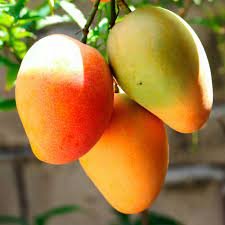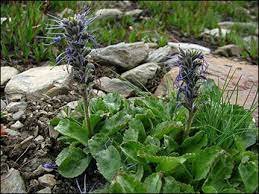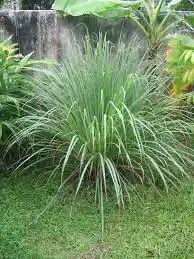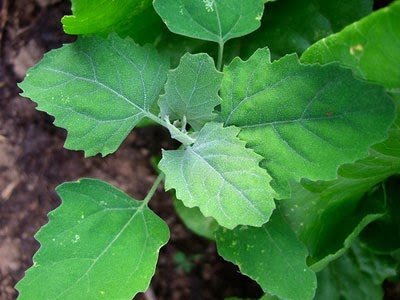Pippali (Piper longum) Nutrition Requirements
Nutrition required by Pippali (Piper longum) at each stage of its life cycle.
SOIL PREPARATION
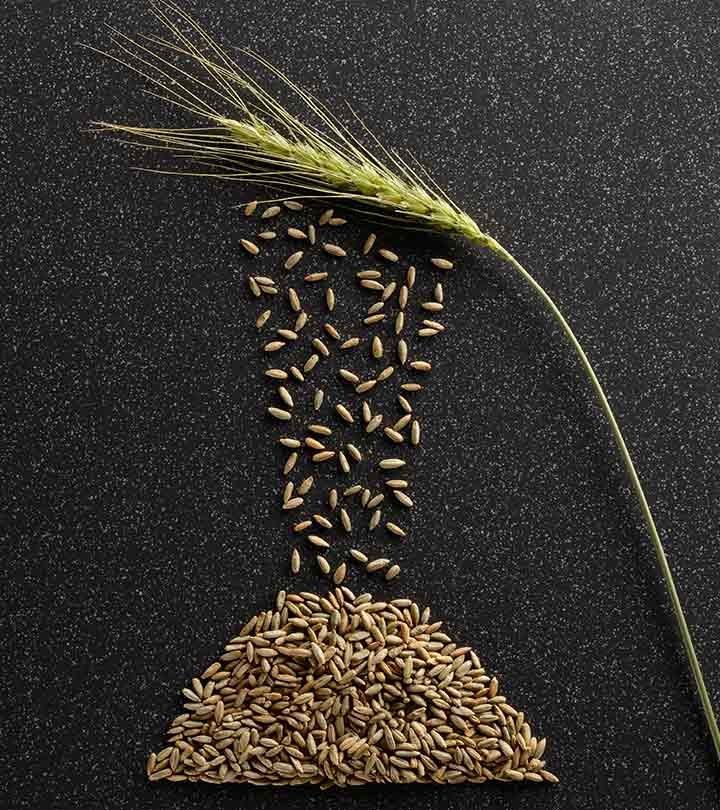
Soil Preparation
Soil preparation is a critical step in Pippali (Piper longum) cultivation to create optimal growing conditions for the plants.
Here's a soil preparation method along with the nutrition requirements during this stage:
**Soil Preparation Method:**
1. **Site Selection:**
Choose a well-drained site with loamy or sandy loam soil for Pippali cultivation. Ensure the site receives partial shade to full sunlight, as Pippali plants prefer semi-shaded conditions.
2. **Soil Testing:**
Conduct a soil test to determine the pH and nutrient levels of the soil. Pippali plants thrive in slightly acidic to neutral soil with a pH range of 5.5 to 7.0.
3. **Clearing and Tilling:**
Clear the site of any weeds, debris, or large rocks. Use a tractor or hand tools to till the soil to a depth of 8 to 10 inches to improve aeration and drainage.
4. **Organic Matter Addition:**
Incorporate organic matter such as well-rotted compost, farmyard manure, or green manure into the soil during tilling. Organic matter improves soil structure, fertility, and water retention capacity.
5. **Soil Amendments:**
Based on the soil test results, add soil amendments as needed to adjust the pH and nutrient levels. Lime can be added to raise pH if the soil is too acidic, while sulfur can be added to lower pH if it's too alkaline. Additionally, add balanced organic fertilizers or specific nutrients (such as nitrogen, phosphorus, and potassium) based on soil deficiencies.
6. **Final Bed Preparation:**
After incorporating organic matter and soil amendments, level the soil surface and create raised beds or ridges for planting Pippali. Ensure proper drainage by creating slight slopes on the beds.
7. **Mulching:**
Apply a layer of organic mulch such as straw, grass clippings, or dried leaves on the soil surface to conserve moisture, suppress weed growth, and maintain soil temperature.
**Nutrition Requirements:**
1. **Nitrogen (N):**
Pippali plants require adequate nitrogen for vegetative growth and overall plant vigor. Apply nitrogen-rich organic fertilizers such as composted manure or poultry manure during soil preparation to provide a steady supply of nitrogen to the plants.
2. **Phosphorus (P):**
Phosphorus is essential for root development and flowering in Pippali plants. Incorporate phosphorus-rich fertilizers such as bone meal or rock phosphate into the soil during soil preparation to promote healthy root growth and flowering.
3. **Potassium (K):**
Potassium is crucial for overall plant health, stress tolerance, and fruit development in Pippali plants. Use potassium-rich fertilizers such as potassium sulfate or greensand during soil preparation to ensure adequate potassium levels in the soil.
4. **Micronutrients:**
Pippali plants also require various micronutrients for optimal growth and development. Incorporate micronutrient-rich organic amendments such as kelp meal or composted seaweed extracts into the soil during preparation to ensure a balanced supply of micronutrients.
5. **pH Adjustment:**
Maintain the soil pH within the optimal range of 5.5 to 7.0 for Pippali cultivation. Adjust soil pH using agricultural lime or elemental sulfur based on soil test recommendations to create ideal growing conditions for the plants.
By following these soil preparation methods and meeting the nutrition requirements, you can create a favorable growing environment for Pippali plants, promoting healthy growth and optimal yields. Regular monitoring of soil and plant health is essential to adjust nutrient management practices as needed and ensure successful cultivation.
Early Growth (Germination to Establishment)

Early Growth
During the early growth stage (germination to establishment) of Pippali (Piper longum) plants, providing the right nutrients is crucial for healthy seedling development and establishment.
Here are the key nutrition requirements during this stage:
1. **Nitrogen (N):**
- Nitrogen is essential for promoting vigorous vegetative growth and overall plant development during the early stages.
- Provide a balanced supply of nitrogen to support healthy leaf and stem growth, as well as root development.
- Apply nitrogen-rich organic fertilizers such as composted manure or poultry manure to the soil before planting or as a side dressing after seedling emergence.
2. **Phosphorus (P):**
- Phosphorus plays a crucial role in promoting early root development, which is vital for seedling establishment and nutrient uptake.
- Ensure an adequate supply of phosphorus in the soil by incorporating phosphorus-rich fertilizers such as bone meal or rock phosphate during soil preparation or at planting.
- Phosphorus supports the formation of strong and healthy root systems, enabling seedlings to establish well in the early growth stage.
3. **Potassium (K):**
- Potassium is important for overall plant health, stress tolerance, and early growth during the establishment stage.
- Provide potassium-rich fertilizers such as potassium sulfate or greensand to promote strong stem and leaf growth, as well as improve water and nutrient uptake in seedlings.
- Potassium also plays a role in enhancing disease resistance and improving overall plant vigor during the early growth stage.
4. **Micronutrients:**
- Micronutrients such as iron, zinc, manganese, and copper are essential for various metabolic processes and overall plant health during the early growth stage.
- Ensure a balanced supply of micronutrients by incorporating micronutrient-rich organic amendments such as kelp meal or composted seaweed extracts into the soil before planting or as a foliar spray after seedling emergence.
- Micronutrients support enzyme activities, photosynthesis, and nutrient absorption in seedlings, promoting healthy growth and development.
5. **Calcium (Ca) and Magnesium (Mg):**
- Calcium and magnesium are secondary nutrients that play important roles in early growth and seedling establishment.
- Ensure adequate calcium and magnesium levels in the soil by incorporating calcium-rich amendments such as gypsum or dolomite lime and magnesium-rich fertilizers such as Epsom salt during soil preparation or at planting.
- Calcium supports cell wall formation and root development, while magnesium is involved in chlorophyll synthesis and overall plant metabolism, contributing to healthy seedling growth.
By meeting the nutrition requirements outlined above during the early growth stage of Pippali plants, you can promote healthy seedling development, strong root establishment, and overall vigor, setting the foundation for successful cultivation and optimal yields. Regular monitoring of plant growth and nutrient status is essential to adjust fertilization practices as needed and ensure healthy growth throughout the growth cycle.
Tillering Stage (Shoot Development)

Tillering Stage
During the tillering stage (shoot development) of Pippali (Piper longum) plants, providing the right nutrients is crucial for promoting vigorous shoot growth and overall plant development.
Here are the key nutrition requirements during this stage:
1. **Nitrogen (N):**
- Nitrogen is essential for promoting robust vegetative growth, including shoot development, leaf expansion, and stem elongation during the tillering stage.
- Provide a balanced supply of nitrogen to support healthy shoot growth and development.
- Apply nitrogen-rich organic fertilizers such as composted manure or poultry manure to the soil as a side dressing or through fertigation to meet the growing demands of the plants.
2. **Phosphorus (P):**
- Phosphorus plays a crucial role in promoting strong root development and overall plant vigor during the tillering stage.
- Ensure an adequate supply of phosphorus in the soil to support healthy shoot and root growth.
- Incorporate phosphorus-rich fertilizers such as bone meal or rock phosphate into the soil during soil preparation or apply them as a side dressing to promote vigorous tiller development.
3. **Potassium (K):**
- Potassium is important for promoting sturdy stem development, improving water uptake, and enhancing overall plant resilience during the tillering stage.
- Provide potassium-rich fertilizers such as potassium sulfate or greensand to support healthy shoot growth and development.
- Apply potassium fertilizers either through soil incorporation during soil preparation or as a side dressing during the tillering stage to meet the growing needs of the plants.
4. **Calcium (Ca) and Magnesium (Mg):**
- Calcium and magnesium are secondary nutrients that play important roles in promoting shoot development and overall plant health during the tillering stage.
- Ensure adequate calcium and magnesium levels in the soil to support healthy shoot growth and development.
- Incorporate calcium-rich amendments such as gypsum or dolomite lime and magnesium-rich fertilizers such as Epsom salt into the soil during soil preparation or apply them as a side dressing during the tillering stage to promote vigorous shoot growth.
5. **Micronutrients:**
- Micronutrients such as iron, zinc, manganese, and copper are essential for various metabolic processes and overall plant health during the tillering stage.
- Ensure a balanced supply of micronutrients by incorporating micronutrient-rich organic amendments such as kelp meal or composted seaweed extracts into the soil or applying them as foliar sprays to promote healthy shoot growth and development.
By meeting the nutrition requirements outlined above during the tillering stage of Pippali plants, you can promote vigorous shoot development, strong root growth, and overall plant vigor, setting the stage for successful cultivation and optimal yields. Regular monitoring of plant growth and nutrient status is essential to adjust fertilization practices as needed and ensure healthy growth throughout the growth cycle.
Flowering

Flowering
During the flowering stage of Pippali (Piper longum) plants, providing the right nutrients is crucial for promoting healthy flower development, pollination, and fruit set.
Here are the key nutrition requirements during this stage:
1. **Potassium (K):**
- Potassium is essential for promoting flower development, improving flower quality, and enhancing fruit set in Pippali plants during the flowering stage.
- Provide a balanced supply of potassium to support healthy flower formation and development.
- Apply potassium-rich fertilizers such as potassium sulfate or greensand to the soil as a side dressing or through fertigation to meet the growing demands of the plants during the flowering stage.
2. **Phosphorus (P):**
- Phosphorus plays a crucial role in promoting flower development, enhancing flower quality, and supporting fruit set in Pippali plants during the flowering stage.
- Ensure an adequate supply of phosphorus in the soil to support healthy flower formation and development.
- Incorporate phosphorus-rich fertilizers such as bone meal or rock phosphate into the soil during soil preparation or apply them as a side dressing to promote vigorous flowering and fruit set.
3. **Nitrogen (N):**
- Nitrogen is important for promoting overall plant vigor and supporting flower development in Pippali plants during the flowering stage.
- Provide a balanced supply of nitrogen to support healthy flower formation and development while avoiding excessive vegetative growth that can inhibit flower production.
- Apply nitrogen-rich organic fertilizers such as composted manure or poultry manure to the soil as a side dressing or through fertigation to meet the growing demands of the plants during the flowering stage.
4. **Calcium (Ca) and Magnesium (Mg):**
- Calcium and magnesium are secondary nutrients that play important roles in promoting flower development and overall plant health during the flowering stage.
- Ensure adequate calcium and magnesium levels in the soil to support healthy flower formation and development.
- Incorporate calcium-rich amendments such as gypsum or dolomite lime and magnesium-rich fertilizers such as Epsom salt into the soil during soil preparation or apply them as a side dressing to promote vigorous flowering.
5. **Micronutrients:**
- Micronutrients such as iron, zinc, manganese, and copper are essential for various metabolic processes and overall plant health during the flowering stage.
- Ensure a balanced supply of micronutrients by incorporating micronutrient-rich organic amendments such as kelp meal or composted seaweed extracts into the soil or applying them as foliar sprays to promote healthy flower development and fruit set.
By meeting the nutrition requirements outlined above during the flowering stage of Pippali plants, you can promote healthy flower development, pollination, and fruit set, leading to successful cultivation and optimal yields. Regular monitoring of plant growth and nutrient status is essential to adjust fertilization practices as needed and ensure healthy flowering throughout the growth cycle.
Matchuration & Ripening

Matchuration & Ripening
During the maturation and ripening stage of Pippali (Piper longum) plants, providing the right nutrients is crucial for promoting healthy fruit development, ripening, and overall plant health.
Here are the key nutrition requirements during this stage:
1. **Potassium (K):**
- Potassium is essential for promoting fruit development, improving fruit quality, and enhancing the ripening process in Pippali plants during the maturation and ripening stage.
- Provide a balanced supply of potassium to support healthy fruit development and ripening.
- Apply potassium-rich fertilizers such as potassium sulfate or greensand to the soil as a side dressing or through fertigation to meet the growing demands of the plants during the maturation and ripening stage.
2. **Calcium (Ca) and Magnesium (Mg):**
- Calcium and magnesium are secondary nutrients that play important roles in promoting fruit development, enhancing fruit quality, and supporting overall plant health during the maturation and ripening stage.
- Ensure adequate calcium and magnesium levels in the soil to support healthy fruit development and ripening.
- Incorporate calcium-rich amendments such as gypsum or dolomite lime and magnesium-rich fertilizers such as Epsom salt into the soil during soil preparation or apply them as a side dressing to promote vigorous fruit development and ripening.
3. **Phosphorus (P):**
- Phosphorus plays a crucial role in promoting fruit development, enhancing fruit quality, and supporting overall plant health during the maturation and ripening stage.
- Ensure an adequate supply of phosphorus in the soil to support healthy fruit development and ripening.
- Incorporate phosphorus-rich fertilizers such as bone meal or rock phosphate into the soil during soil preparation or apply them as a side dressing to promote vigorous fruit development and ripening.
4. **Nitrogen (N):**
- Nitrogen is important for promoting overall plant health and supporting fruit development in Pippali plants during the maturation and ripening stage.
- Provide a balanced supply of nitrogen to support healthy fruit development and ripening while avoiding excessive vegetative growth that can inhibit fruit production.
- Apply nitrogen-rich organic fertilizers such as composted manure or poultry manure to the soil as a side dressing or through fertigation to meet the growing demands of the plants during the maturation and ripening stage.
5. **Micronutrients:**
- Micronutrients such as iron, zinc, manganese, and copper are essential for various metabolic processes and overall plant health during the maturation and ripening stage.
- Ensure a balanced supply of micronutrients by incorporating micronutrient-rich organic amendments such as kelp meal or composted seaweed extracts into the soil or applying them as foliar sprays to promote healthy fruit development and ripening.
By meeting the nutrition requirements outlined above during the maturation and ripening stage of Pippali plants, you can promote healthy fruit development, ripening, and overall plant health, leading to successful cultivation and optimal yields. Regular monitoring of plant growth and nutrient status is essential to adjust fertilization practices as needed and ensure healthy maturation and ripening throughout the growth cycle.
Harvesting

Harvesting
Pippali, also known as Piper longum or Long Pepper, is a flowering vine in the family Piperaceae. In Ayurvedic medicine, Pippali is highly valued for its medicinal properties, and it is used in various formulations to support health and well-being. When it comes to harvesting Pippali, ensuring proper nutrition and following the right procedures are essential to obtain high-quality yields.
Here's a guide to the nutrition requirements and harvesting procedures for Pippali:
Nutrition Requirements:
1. Soil: Pippali thrives in well-drained, fertile soil with a slightly acidic to neutral pH level (6.0-7.5).
2. Sunlight: Pippali requires full to partial sunlight for optimal growth.
3. Water: Adequate irrigation is essential, especially during the growing season. Pippali prefers moderate moisture levels and does not tolerate waterlogging.
4. Nutrients: A balanced fertilizer regimen rich in organic matter is beneficial for Pippali plants. Incorporating compost or well-decomposed manure into the soil before planting can provide essential nutrients.
5. Micronutrients: Pippali plants may benefit from micronutrient supplements, especially if deficiencies are observed. Foliar application of micronutrient-rich solutions can help address deficiencies.
Harvesting Procedure:
1. Timing: Pippali is typically harvested when the fruits (spikes) are ripe but still green. The ideal time for harvesting is usually during the dry season.
2. Inspection: Before harvesting, carefully inspect the plants for any signs of disease or pest infestation. Remove any damaged or unhealthy parts of the plant.
3. Harvesting: Use sharp pruning shears or scissors to harvest the fruit spikes of Pippali. Cut the spikes carefully to avoid damaging the plant.
4. Drying: After harvesting, the fruit spikes need to be dried properly to preserve their medicinal properties. Spread them out in a well-ventilated area away from direct sunlight. Turn the spikes regularly to ensure even drying.
5. Storage: Once the fruit spikes are completely dried, store them in airtight containers in a cool, dry place. Proper storage helps maintain the quality and potency of Pippali.
Following these nutrition requirements and harvesting procedures can help ensure a successful Pippali harvest with high-quality yields rich in medicinal compounds. Additionally, consulting with local agricultural experts or experienced growers can provide valuable insights specific to your region's conditions.
Pippali (Piper longum) Farming Economics
Get details of Profitability and cost estimate in growing Pippali (Piper longum) per acres of Land.
SOIL PREPARATION
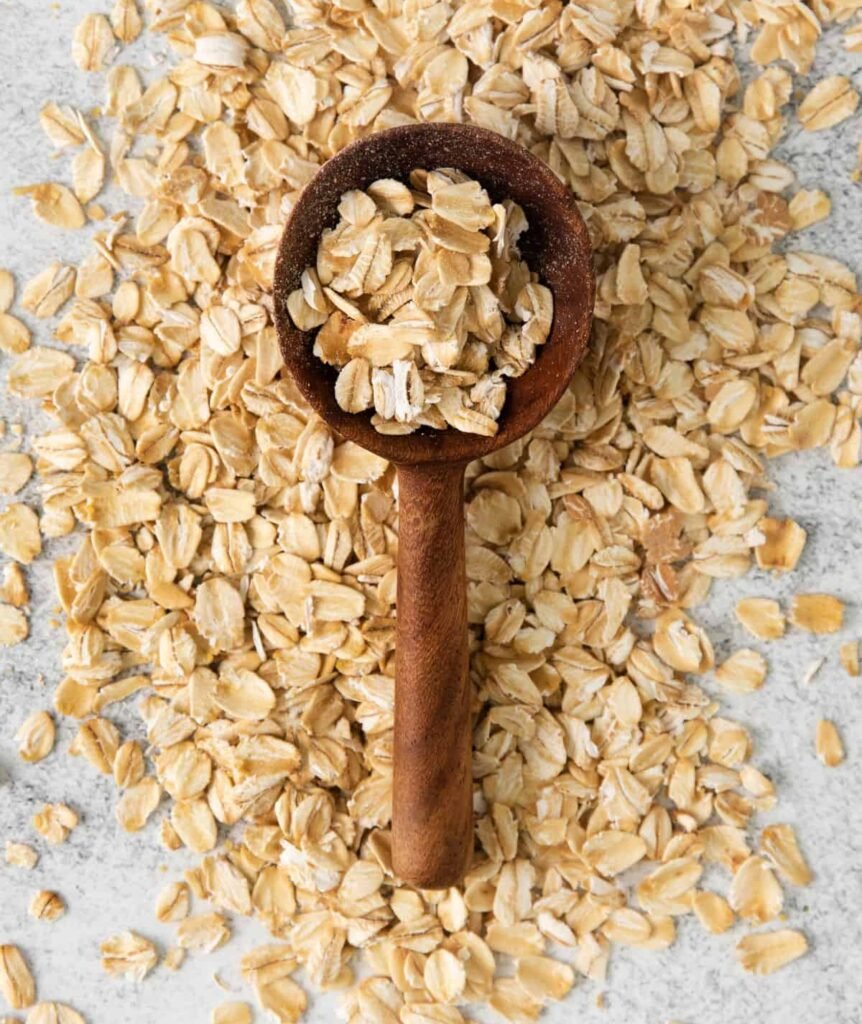
Soil Preparation
Early Growth (Germination to Establishment)

Early Growth
Tillering Stage (Shoot Development)

Tillering Stage
Flowering

Flowering
Matchuration & Ripening

Matchuration & Ripening
Harvesting

Harvesting
Pippali (Piper longum) Disease Details
Nutrition required by Pippali (Piper longum) at each stage of its life cycle.
SOIL PREPARATION

Soil Preparation
During the soil preparation stage for Pippali (Piper longum) cultivation, several diseases and pests can affect the soil and subsequently impact plant health.
Here are some common issues and precautions to prevent them:
**Diseases:**
1. **Soil-Borne Diseases:** Soil-borne pathogens such as fungal diseases (e.g., Fusarium wilt, Pythium root rot) and bacterial diseases (e.g., bacterial wilt) can infect the soil during preparation, leading to plant damage and yield loss.
**Precautions:**
- Ensure proper drainage: Poorly drained soil can promote the growth of soil-borne pathogens. Improve soil drainage by incorporating organic matter and avoiding over-irrigation.
- Rotate crops: Practice crop rotation to break disease cycles and reduce the buildup of soil-borne pathogens.
- Soil sterilization: Consider soil sterilization techniques such as solarization or steam sterilization to kill pathogens before planting.
**Pests:**
1. **Soil Insects:** Soil-dwelling insects such as nematodes, cutworms, and wireworms can feed on plant roots, leading to stunted growth and reduced yields.
**Precautions:**
- Soil sanitation: Remove debris and weeds from the soil to eliminate potential habitats for soil insects.
- Biological control: Introduce beneficial organisms such as nematode-trapping fungi or beneficial nematodes to control soil-dwelling pests.
- Crop rotation: Rotate crops to disrupt pest life cycles and reduce soil insect populations.
2. **Weed Competition:** Weeds compete with Pippali plants for nutrients, water, and sunlight, leading to reduced growth and yields.
**Precautions:**
- Weed management: Implement effective weed control measures such as hand weeding, mulching, or the use of herbicides (if permitted and safe) to suppress weed growth.
- Cover crops: Plant cover crops during fallow periods to suppress weed growth and improve soil health.
3. **Soil-Borne Diseases:** Diseases caused by soil-borne pathogens such as damping-off, root rot, and crown rot can affect seedlings and young plants, leading to poor establishment and growth.
**Precautions:**
- Use disease-free planting material: Ensure that seeds or seedlings are free from diseases before planting.
- Proper irrigation: Avoid overwatering, as excessive moisture can promote the development of soil-borne diseases. Use drip irrigation or water in the morning to allow foliage to dry quickly.
- Crop rotation: Rotate crops to prevent the buildup of soil-borne pathogens and reduce disease pressure.
By implementing these precautions during the soil preparation stage, you can minimize the risk of diseases and pests in Pippali cultivation and promote healthy plant growth and yields. Regular monitoring of soil health and plant vigor is essential to detect and address any issues promptly.
Early Growth (Germination to Establishment)

Early Growth
During the early growth stage (germination to establishment) of Pippali (Piper longum) plants, several diseases and pests can affect the young seedlings.
Here are some common issues and precautions to prevent them:
1. **Damping-off:**
- Damping-off is a fungal disease that affects seedlings, causing them to rot at the soil line and collapse.
**Precautions:**
- Use clean, disease-free planting materials.
- Ensure proper soil drainage to prevent waterlogging, which promotes fungal growth.
- Avoid overwatering and maintain proper soil moisture levels.
- Treat seeds with fungicides before planting to prevent damping-off.
2. **Seedling Blights:**
- Seedling blights are fungal diseases that affect young seedlings, causing lesions, discoloration, and wilting.
**Precautions:**
- Plant seeds in well-drained, sterilized soil or seedling mix to reduce the risk of fungal infection.
- Provide adequate air circulation around seedlings to prevent humidity buildup, which favors fungal growth.
- Avoid overcrowding seedlings to minimize the spread of diseases.
3. **Root Rots:**
- Root rot diseases, caused by various fungi and soilborne pathogens, affect the root system of young seedlings, leading to wilting and stunted growth.
**Precautions:**
- Ensure proper soil drainage to prevent waterlogging, which promotes root rot pathogens.
- Use disease-resistant cultivars if available.
- Rotate crops to prevent the buildup of soilborne pathogens.
4. **Aphids and Thrips:**
- Aphids and thrips are common pests that feed on young plant tissues, causing stunted growth, leaf curling, and deformation.
**Precautions:**
- Monitor plants regularly for signs of aphid or thrip infestation.
- Use insecticidal soaps or neem oil to control aphids and thrips.
- Introduce natural predators such as ladybugs or lacewings to manage aphid populations.
5. **Cutworms and Caterpillars:**
- Cutworms and caterpillars are common pests that feed on young seedlings, causing damage to stems and leaves.
**Precautions:**
- Use physical barriers such as collars around seedlings to prevent cutworm damage.
- Handpick caterpillars and cutworms from plants and dispose of them.
6. **Leaf Spot Diseases:**
- Leaf spot diseases, caused by various fungi and bacteria, result in the formation of spots or lesions on leaves, affecting plant health and vigor.
**Precautions:**
- Avoid overhead watering to reduce leaf wetness, which can promote the spread of fungal and bacterial pathogens.
- Remove and destroy infected plant debris to prevent the spread of disease.
By implementing these precautions during the early growth stage of Pippali plants, you can minimize the risk of diseases and pests and promote healthy seedling development and establishment. Regular monitoring of plant health and pest presence is essential to identify and address any emerging issues promptly.
Tillering Stage (Shoot Development)

Tillering Stage
During the tillering stage (shoot development) of Pippali (Piper longum) plants, several diseases and pests can affect the growth and development of the plants.
Here are some common issues and precautions to prevent them:
1. **Fungal Diseases:**
- **Leaf spot:** Fungal pathogens can cause circular spots or lesions on leaves, leading to reduced photosynthesis and plant vigor.
- **Powdery mildew:** This fungal disease appears as a white powdery growth on leaves and stems, inhibiting plant growth and development.
**Precautions:**
- Provide adequate air circulation by spacing plants appropriately to reduce humidity levels, which can favor fungal growth.
- Avoid overhead watering to prevent leaf wetness, which promotes fungal diseases.
- Remove and destroy infected plant debris to prevent the spread of fungal pathogens.
2. **Bacterial Diseases:**
- **Bacterial leaf blight:** Bacterial pathogens can cause water-soaked lesions on leaves, leading to wilting and plant decline.
**Precautions:**
- Avoid overhead irrigation to minimize water splash, which can spread bacterial pathogens.
- Use disease-free planting material and maintain good sanitation practices to prevent the introduction and spread of bacterial diseases.
- Apply copper-based fungicides as preventive treatments to suppress bacterial diseases.
3. **Nematodes:**
- Nematodes are microscopic roundworms that feed on plant roots, leading to stunted growth and reduced yield.
**Precautions:**
- Rotate crops with non-host plants to disrupt the nematode life cycle and reduce population levels.
- Use resistant varieties of Pippali, if available.
- Apply organic soil amendments with nematicidal properties, such as neem cake or castor cake, to suppress nematode populations.
4. **Insect Pests:**
- **Aphids:** Aphids feed on plant sap, causing stunted growth and deformation of leaves and shoots.
- **Cutworms:** Cutworm larvae feed on plant stems at the soil level, causing plant wilting and death.
**Precautions:**
- Monitor plants regularly for signs of insect infestation and apply appropriate insecticides or biological control agents as needed.
- Use physical barriers such as collars around plant stems to prevent cutworm damage.
- Introduce natural predators such as ladybugs or lacewings to manage aphid populations.
5. **Environmental Stress:**
- Stress factors such as waterlogging, drought, or extreme temperatures can weaken plants and make them more susceptible to diseases and pests.
**Precautions:**
- Maintain proper soil moisture levels by watering plants evenly and avoiding waterlogged conditions.
- Provide shade or protection from extreme temperatures to minimize plant stress.
By implementing these precautions during the tillering stage of Pippali plants, you can minimize the risk of diseases and pests and promote healthy shoot development and plant growth. Regular monitoring of plant health and pest presence is essential to identify and address any emerging issues promptly.
Flowering

Flowering
During the flowering stage of Pippali (Piper longum) plants, several diseases and pests can affect the flowers and overall plant health.
Here are some common issues and precautions to prevent them:
1. **Fungal Diseases:**
- **Powdery mildew:** Fungal disease characterized by white powdery growth on leaves, stems, and flowers, leading to reduced photosynthesis and plant vigor.
- **Anthracnose:** Fungal disease causing dark lesions on flowers and fruits, leading to premature dropping and reduced yield.
**Precautions:**
- Ensure proper air circulation by spacing plants adequately to reduce humidity and minimize fungal growth.
- Avoid overhead watering to prevent leaf wetness, which can promote fungal diseases.
- Apply fungicides preventively or as soon as symptoms are observed, following label instructions carefully.
2. **Bacterial Diseases:**
- **Bacterial wilt:** Bacterial pathogens can infect flowers and stems, causing wilting, yellowing, and necrosis of tissues.
**Precautions:**
- Use disease-free planting materials and avoid introducing contaminated soil or water to the planting area.
- Maintain good hygiene practices by sanitizing tools and equipment to prevent the spread of bacterial pathogens.
- Apply copper-based fungicides preventively or as soon as symptoms appear to control bacterial wilt.
3. **Insect Pests:**
- **Thrips:** Thrips feed on flowers and leaves, causing damage and discoloration, leading to reduced flower quality.
- **Aphids:** Aphids can infest flowers, causing distortion and wilting of flower buds.
**Precautions:**
- Monitor plants regularly for signs of insect infestation, especially on flowers.
- Use insecticidal soaps, neem oil, or botanical insecticides to control thrips and aphids.
- Introduce natural predators such as ladybugs, lacewings, or predatory mites to manage aphid and thrip populations.
4. **Pollination Issues:**
- Poor pollination can result in reduced fruit set and yield in Pippali plants.
**Precautions:**
- Encourage pollinator activity by planting flowering companion plants nearby.
- Avoid the use of broad-spectrum insecticides during flowering to protect pollinators.
5. **Nutrient Deficiencies:**
- Nutrient deficiencies, particularly potassium and phosphorus, can affect flower development and overall plant health.
**Precautions:**
- Conduct soil tests to assess nutrient levels and apply appropriate fertilizers based on test results.
- Incorporate organic matter such as compost or well-rotted manure to improve soil fertility and structure.
By implementing these precautions during the flowering stage of Pippali plants, you can minimize the risk of diseases and pests and promote healthy flower development. Regular monitoring of plant health and pest presence is essential to identify and address any emerging issues promptly.
Matchuration & Ripening

Matchuration & Ripening
During the maturation and ripening stage of Pippali (Piper longum) plants, several diseases and pests can affect the fruits and overall plant health.
Here are some common issues and precautions to prevent them:
1. **Fungal Diseases:**
- **Anthracnose:** Fungal disease causing dark, sunken lesions on fruits, leading to fruit rot and decay.
- **Fruit rot:** Various fungal pathogens can cause fruit rot, characterized by softening, discoloration, and foul odor in mature fruits.
**Precautions:**
- Ensure proper spacing between plants to improve air circulation and reduce humidity, which can limit fungal growth.
- Avoid overhead watering to minimize fruit wetness, as moisture promotes fungal diseases.
- Apply fungicides preventively or as soon as symptoms are observed, following label instructions carefully.
2. **Bacterial Diseases:**
- **Bacterial fruit rot:** Bacterial pathogens cause water-soaked lesions on fruits, which may lead to tissue necrosis and fruit decay.
**Precautions:**
- Use disease-free planting materials and avoid introducing contaminated soil or water to the planting area.
- Maintain good hygiene practices by sanitizing tools and equipment to prevent the spread of bacterial pathogens.
- Apply copper-based fungicides preventively or as soon as symptoms appear to control bacterial fruit rot.
3. **Insect Pests:**
- **Fruit flies:** These pests lay eggs on ripening fruits, leading to infestation and fruit damage.
- **Thrips:** Thrips feed on fruits, causing surface scarring and distortion.
**Precautions:**
- Use insect traps or barriers to prevent fruit fly infestation.
- Harvest fruits promptly when ripe to minimize exposure to fruit flies.
- Monitor plants regularly for signs of insect infestation, particularly on ripening fruits.
- Use insecticidal soaps, neem oil, or botanical insecticides to control fruit flies and thrips.
4. **Weed Competition:**
- Weeds compete with Pippali plants for nutrients, water, and sunlight, affecting fruit development and overall plant vigor.
**Precautions:**
- Remove weeds manually or use mulch to suppress weed growth and conserve soil moisture.
- Use pre-emergent herbicides or hand-weeding to control weed growth around ripening Pippali plants.
5. **Nutrient Management:**
- Imbalanced nutrition can lead to poor fruit development and susceptibility to diseases and pests.
**Precautions:**
- Ensure proper fertilization with balanced nutrients, particularly potassium for fruit development.
- Conduct soil tests to assess nutrient levels and adjust fertilization accordingly.
By implementing these precautions during the maturation and ripening stage of Pippali plants, you can minimize the risk of diseases and pests and promote healthy fruit development. Regular monitoring of plant health and pest presence is essential to identify and address any emerging issues promptly.
Harvesting

Harvesting
During the harvesting stage of Pippali (Piper longum) plants, several factors can affect the quality of harvested produce. While there aren't specific diseases that occur at the harvesting stage, there are some considerations to ensure the harvested Pippali meets quality standards and is free from contamination:
1. **Fungal and Bacterial Contamination:**
- Improper handling and storage of harvested Pippali can lead to fungal and bacterial contamination, resulting in spoilage and reduced shelf life.
**Precautions:**
- Harvest Pippali during dry weather conditions to minimize moisture on the plant material, reducing the risk of fungal and bacterial growth.
- Handle harvested Pippali with care to prevent bruising and damage that can provide entry points for pathogens.
- Ensure proper sanitation of harvesting tools and equipment to prevent the spread of contaminants.
- Store harvested Pippali in clean, dry containers or packaging to prevent moisture buildup and contamination.
2. **Pest Infestation:**
- Pests such as insects and rodents may infest harvested Pippali during storage, leading to losses and contamination.
**Precautions:**
- Inspect harvested Pippali for signs of pest infestation before storage or processing.
- Use pest-proof containers or packaging to prevent access to stored Pippali.
- Employ appropriate pest control measures, such as traps or insecticides, to manage pest populations in storage areas.
3. **Physical Damage:**
- Rough handling during harvesting and transportation can result in physical damage to Pippali, reducing its market value and quality.
**Precautions:**
- Harvest Pippali carefully to avoid bruising and mechanical damage.
- Use appropriate containers or packaging to protect harvested Pippali during transportation to minimize physical damage.
4. **Post-Harvest Losses:**
- Inadequate post-harvest handling and storage practices can lead to losses due to spoilage and deterioration of Pippali quality over time.
**Precautions:**
- Implement proper post-harvest handling practices, including sorting, cleaning, and drying, to maintain Pippali quality.
- Store harvested Pippali in a cool, dry, and well-ventilated environment to minimize spoilage and deterioration.
- Monitor stored Pippali regularly for signs of spoilage or deterioration and take appropriate measures to prevent losses.
By following these precautions during the harvesting stage of Pippali cultivation, you can minimize the risk of contamination, spoilage, and post-harvest losses, ensuring that the harvested produce meets quality standards and maintains its value. Regular monitoring and maintenance of harvesting equipment and storage facilities are essential to ensure optimal post-harvest handling practices.





